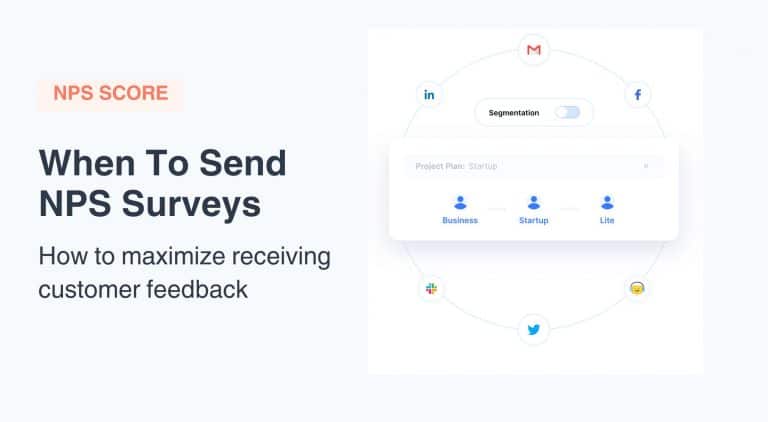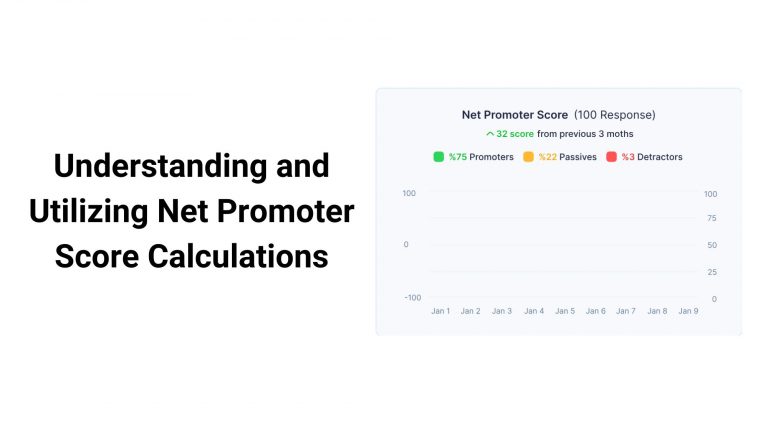
“If you build it, they will come.”
You may have thought of that old line a few times when your software was still in development.
Now, as CEO of a SaaS (Software as a Service) business, you’re learning that’s not necessarily true.
Even the best product can suffer low activation rates when paired with subpar onboarding, poor UX (user experience), and multiple pain points.
The key to your company’s success lies in a comprehensive product activation strategy that addresses your product’s friction points.
In this guide, we explore the importance of product activation, how you can define activation points for your Saas product, and the common pitfalls of low activation. Finally, you’ll learn six ways you can boost your product activation rates.
Table of Contents
- What Is Product Activation in SaaS?
- Why Is Product Activation Important in SaaS?
- How Do Companies Define the User Product Activation Point in SaaS?
- What Is a Good Activation Rate for SaaS?
- 4 Consequences of Low SaaS Product Activation
- 6 Ways To Increase User Activation in SaaS
- Boost SaaS Product Activation Rates With the AnnounceKit App

Quick Setup, Easy to Use, and Many Integrations
Manage your product announcements from a single place and easily distribute them
across multiple channels.
What Is Product Activation in SaaS?
Product activation in SaaS is a pivotal milestone when a new customer experiences the benefits of your software for the first time.
Not to be confused with the “aha moment,” when users realize your product’s value, but may not have experienced the value yet.
In SaaS, users are typically considered activated once they’ve engaged in a series of key activation points, which generally include the core features of your product.
Why Is Product Activation Important in SaaS?
Activation is arguably the most critical of McClure’s Pirate Metrics for SaaS companies to measure and optimize. How quickly a user achieves activation can reflect on how efficiently the company’s acquisition resources are spent.
Many SaaS companies operate on a free-to-paid subscription revenue model. Most subscription SaaS companies usually find it‘s easier to attract new customers than move them to monetization.
High product activation rates in SaaS can improve customer satisfaction, increase user retention, and boost revenue.
Low user retention can be a key indicator of low activation since disengaged users are more likely to cancel their subscriptions.
On the other hand, activated users are engaged in your product and have experienced for themselves the power your product has to offer and, as a result, are more likely to continue as paying customers.
As those activated users become advocates for your product, a high activation rate can easily translate to increased acquisition.
How Do Companies Define the User Product Activation Point in SaaS?
Identifying your user product activation point is a critical tool in predicting long-term retention. However, every SaaS company will have a unique user product activation point based on the onboarding process and specific product milestones.
A user’s activation breakthrough point is the moment they perform a pivotal event early in the onboarding process which allows them to unlock the product’s core value.
To find this landmark for your SaaS product, take a look at your user’s activity.
A good indicator of activation is when your user begins to level up and form new habits within your product. When that increased activity depicts key product features being utilized you can bet your user is activated.
Furthermore, different levels of product activation can exist with multiple activation points. This is another reason why identifying customer lifespan, forecasting milestones, and calculating CLV (customer lifetime value) will help your SaaS company increase revenue long-term.
What Is a Good Activation Rate for SaaS?
The activation rate for SaaS can provide a crucial indicator of how well your software delivers value to new users. It can help identify areas for improvement in onboarding and the overall UX.
The average activation rate for SaaS companies is 36%, and the median is 30%.
The formula for calculating the user activation rate provides a metric that quantifies the percentage of activated users after signing up.
User Activation Rate = (The number of activated users / Total signups) x 100
Here’s a quick example of how to calculate your user activation rate:
- If 1,000 users sign up for your SaaS product in any given month, and
- Of those 1,000 sign-ups, 450 become activated users; then
- Your user activation rate is 45% (450 activated users / 1,000 total signups) x 100 = 45%
4 Consequences of Low SaaS Product Activation
#1: Higher Churn Rate
Churn rate is the annual percentage rate at which customers cancel their subscription service.
Product abandonment and a high customer churn rate is the reason nine out of 10 startups fail.
When customers aren’t engaged in your product, it’s only a matter of time before they stop using and paying for your service.
If you’re acquiring more users each month, but your profits aren’t budging, low activation and a high churn rate could be the culprit.
#2: Lower Customer Satisfaction and Customer Lifetime Value
Do you have low feedback, low customer satisfaction, or short customer lifetime value?
It’s likely because users who don’t fully engage with your product will struggle to realize your product’s value. Those users are less likely to convert into paying customers or upgrade to higher monetized plans.
Low product activation can directly affect your revenue stream and lead to unsatisfied customers and untapped referrals.
That’s not a good look for your brand.
The longer a customer continues to use your SaaS product, the greater their lifetime value becomes, helping you boost customer loyalty and reduce churn.
#3: Higher Customer Acquisition Costs
Customer acquisition costs forecast the total cost of acquiring a new customer, including the money spent on sales and marketing. It helps you determine if your marketing investment is attracting activated customers and having a positive impact on your bottom line.
Yet the most impactful money is spent on the customers you already have.
Acquiring new customers costs more than retaining current customers. If your customer acquisition costs exceed your revenue for too long, you can find your SaaS business in the red.
#4: Negative Marketing ROI
Higher customer acquisition costs inevitably result in negative marketing ROI.
Every marketing dollar is spent driving customers toward activation milestones. But when customers abandon your SaaS product before reaching the activation point, all the resources go to waste and you start again with acquisition.
Repeat that enough over time and your SaaS company may bite the dust.

6 Ways To Increase User Activation in SaaS
#1: Personalize Onboarding With Welcome Screens
Seize the first opportunity to get to know your users with a mini survey in the signup flow to create personalized welcome screens based on their roles and goals. Identifying the user persona at the welcome screen empowers you to customize the onboarding journey.
Contextual onboarding provides a better user experience designed to cut through the clutter and get straight to what matters most to them.
Personalized pop-ups that showcase the key product features tailored to their needs will push your users to their aha moment as quickly as possible.
#2: Implement Steps To Guide Users To Activation Points
Now that you’ve identified the key user activation points, trace those steps backward to the first sign-up. Use these steps as a map to walk users to the activation point milestone.
Utilizing fun onboarding gamification elements like checklists, badges, points, and progress bars keeps users engaged while guiding them through the product to the desired activation behavior.
According to 2023 SaaS Onboarding research, 44% use an onboarding checklist, and 30% use progress bars during their onboarding process.
Onboarding gamification leverages psychological principles like the Zeigranik effect to get users to complete the onboarding process.
#3: Walk Your Customers Through Key Actions
If your app greets new users with a long, generic product tour, it’s time to rethink how you showcase your product.
Activation plays a critical role in whether new trial users become paying customers.
Interactive walkthroughs are the best way to guide new users through the activation funnel step-by-step by encouraging them to engage with specific product features selected based on the user persona identified in the signup flow.
#4: Use Customer Analytics To See How Users Engage With Your Updates
Customer analytics give you the insights you need to see how users engage with your updates and uncover pain points.
Using surveys like NPS (Net Promoter Scores) and CSAT (Customer Satisfaction) can help you measure the likelihood of users recommending your product to others (NPS) or assess overall satisfaction (CSAT). Collect these surveys during the onboarding stage to identify and troubleshoot issues that may be preventing users from becoming fully activated.
If you’re looking for comprehensive customer experience analytics with insights into user behavior, preferences, and satisfaction throughout the customer lifespan, look no further than AnnounceKit.
Our powerful customer analytics and announcement software features easy-to-use dashboards that track customer behavior and engagement. With real-time notifications, you can see when customers interact with your product updates, providing you with up-to-the-minute customer analytics.

Quick Setup, Easy to Use, and Many Integrations
Manage your product announcements from a single place and easily distribute them
across multiple channels.
#5: Use In-App Support To Help Users Easily Reach Product Activation Points
In-app support acts as a help center where users can go for immediate assistance with your product.
Cultivate a generous help center by adding a variety of resources like:
- Tutorials
- Educational blogs
- Intuitive pop-up widgets
- Micro-videos; and
- Help chat
In-app support helps users reach product activation points by offering intuitive, self-service support that puts users back in the workflow as quickly as possible.
#6: Effectively Engage Customers Using AnnounceKit
Just because a user was put off by their onboarding experience or got stuck at the free-trial stage doesn’t mean they’re lost forever.
Find out why users went AWOL and re-engage them using tools from AnnounceKit:
- Email Newsletter: Reach users’ inboxes with incentives, “we miss you” emails, success stories, or educational content.
- Feature Requests: You speak, we listen. Let customers request features and upvote what they want you to build.
- Release Notes: This no-code tool helps create engaging release notes to efficiently deliver product updates.
- Product Announcements: Announce new features and news to your customers that may improve their user experience.
- Product Roadmap: Maybe a desired update is already in the works. Share your product roadmap with your customers so they know what to expect and when.
- Customer Feedback: Thoughts? Centralized customer feedback in one place makes it easy to share.
Squeeze every penny out of your marketing dollars and let AnnounceKit help you reignite your inactive users’ interest.

Quick Setup, Easy to Use, and Many Integrations
Manage your product announcements from a single place and easily distribute them
across multiple channels.
Boost SaaS Product Activation Rates With the AnnounceKit App
Improving your activation rates can be a cost-effective way to grow your SaaS business.
With AnnounceKit, you have powerful tools at your fingertips to track user analytics and modify the UX to make a significant impact on your SaaS product activation rates.
The AnnounceKit dashboard offers a quick set-up with foolproof features to create and share product updates and manage feedback all in one place.
Build eye-catching in-app widgets and feature requests, no coding required.
Spend less time writing. Use our intuitive AI to write product announcements, updates, and posts.
Target specific user segments based on any qualifier thanks to data-driven customer analytics.
Contact us today to book a demo and find out why SaaS businesses love AnnounceKit.

Quick Setup, Easy to Use, and Many Integrations
Manage your product announcements from a single place and easily distribute them
across multiple channels.







